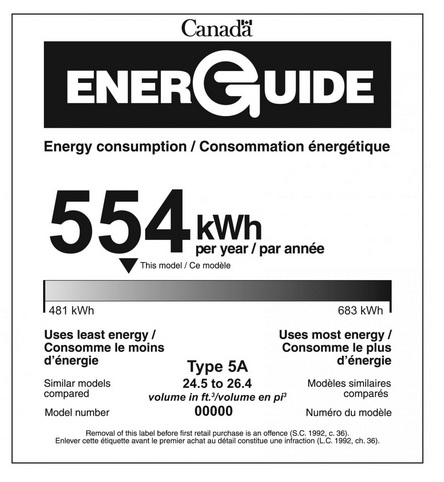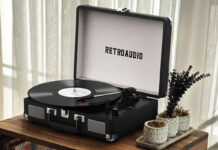 When it comes to saving electricity, a good place to start is looking at your old appliances. If your home is filled with older models they are not going to be ENERGY STAR rated and may cost you more money in the long run.
When it comes to saving electricity, a good place to start is looking at your old appliances. If your home is filled with older models they are not going to be ENERGY STAR rated and may cost you more money in the long run.
The ENERGY STAR program was created in 1992 to make our appliances consume less electricity. The program has grown to cover more than 50 product categories and has become an industry standard. That blue logo on your appliance means it’s going to save you money.
Of course, first generation ENERGY STAR products are not going to be as efficient as today’s models. The program encourages and rewards manufacturers who continue to improve on their models to make them more efficient.
The ENERGY STAR labels can show you at a glance whether the model offers any energy savings. Canada also created the mandatory EnerGuide label. It gives the specifications on exactly how the product saves energy. Typically that means a product must be from 10 to 65% more efficient than standard products of the same category without sacrificing qualities or features. This easy to read label shows you how energy efficient your particular model is compared to others. Look at the grey scale in the middle of the label and it will show you where that current model is on the scale of energy savings. You can determine how much energy you can save with that label.
Old energy guzzlers

Refrigerators are a good example of how the ENERGY STAR has evolved. Of all the appliances in your home, refrigerators and freezers use the most energy. Since they are operating 24-7, refrigerator consumer about one-sixth of all the electricity in your home. A 10-year old fridge uses twice as much energy as a new refrigerator. Most new refrigerator are ENERGY STAR efficient.
The first efficiency standards for refrigerators took effect in 1990 and the levels have increased steadily. A 1986 fridge used about 1400 kWh of electricity a year, while today’s ENERGY STAR models use only 350 kWh —a 75% reduction in consumption.
While all the new models are more energy efficient, some are better than others. The most energy efficient fridges are those with the freezer on the top or bottom. Side-by-side uses more 13% more energy. Turning off certain features can also bump up your energy savings. Automatic ice makers and through-the-door dispensers use 20% more electricity. Look for an off switch for the anti-sweat heater– this feature consumes up to 10% more energy.
You can also calculate the second price tag of an appliance by calculating the lifetime energy cost of an appliance. Most of today’s appliances have been designed to give trouble-free service before they start to wear out. Dishwashers are expected to last 11 years, ranges and refrigerators 15 years. Even small savings can start to add up on your utility bill. We don’t always take into account the cost to operate a product such as a major appliance but we should. Natural Resources has created the second price tag calculator to help you determine how much you can save buying a new ENERGY STAR rated appliance.
Cleaning up

Washing machines have made a giant leap forward in their energy efficiency in the last two decades. This was done by decreasing the amount of water used and also creating cold water cycles.
Front-loader washing machines require even less water because of their tumbling action. Overall ENERGY STAR washers use 50% less energy than standard models and needs only 25 gallons of water. Older, standard machines use 40 gallons.
Replacing your pre-1994 washer can reduce your utility bill significantly. ENERGY STAR washing machines are also offering different cycles to lower fabric wear, better stain removal and shorter dryer times.
Doing the dishes
The other appliance that benefits from an upgrade is your dishwasher. New dishwashers are just better at getting dishes clean. Improvements include eliminating the pre-wash routine, thereby reducing the amount of water used and adding sensors to determine the length of a wash cycle and the correct water temperature needed. The newest ENERGY STAR dishwashers use 25% less energy. Look for a dishwashers with a light-wash or energy-saving wash cycle further and the option to air-dry dishes with circulation fans rather than heat-dried dishes.
Learn to read the ENERGUIDE in my article . Check out all the Best Buy ENERGY STAR appliances to start saving on your utility bill.



